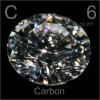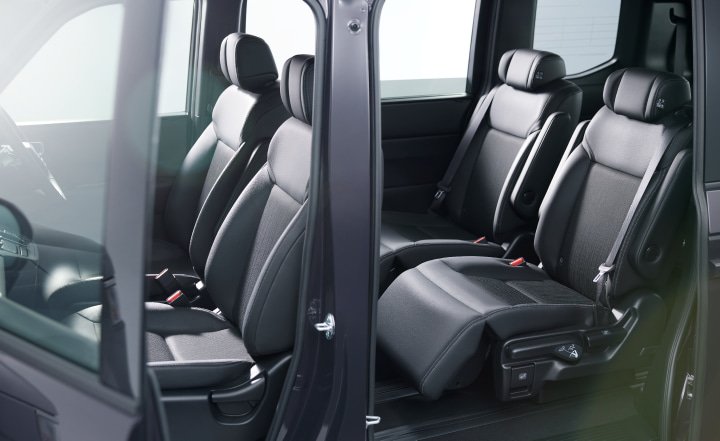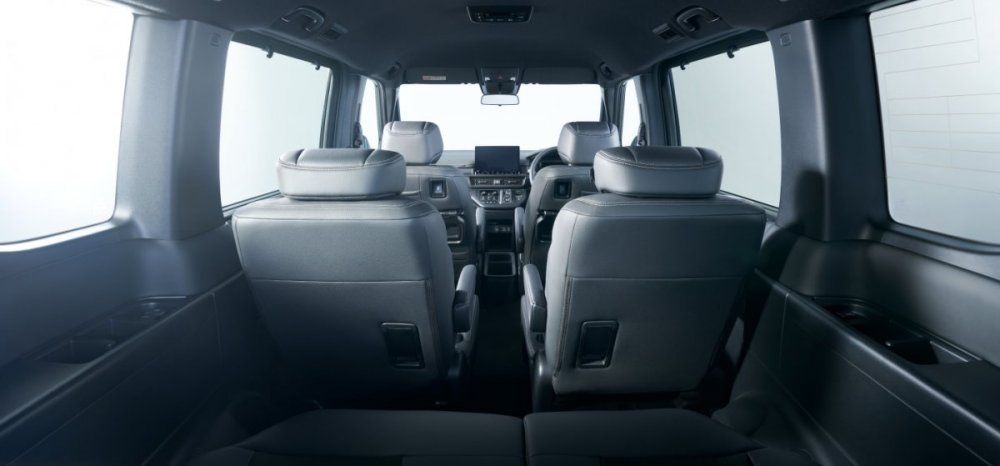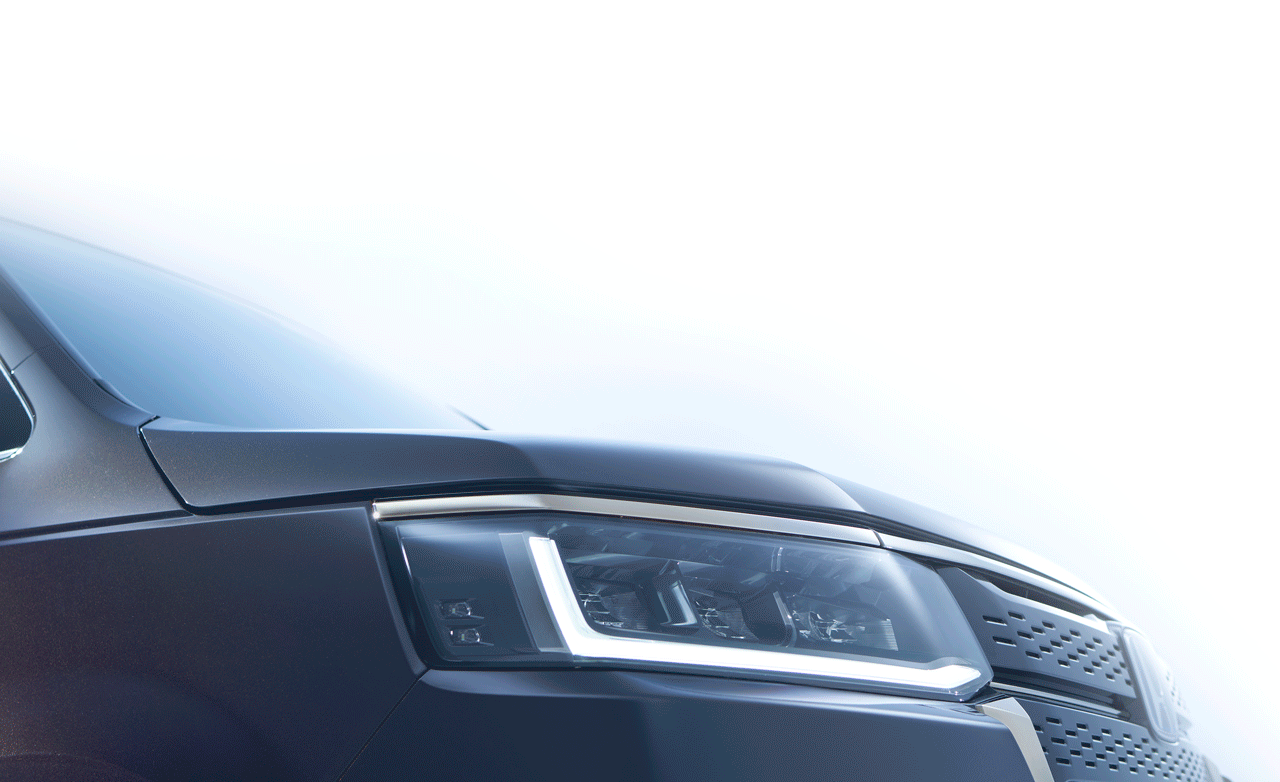Search the Community
Showing results for tags '7 seater'.
-
This is not another normal SUV / MPV... You are looking at the first large size EV from Skoda, with RWD setup! Skoda hasn’t built a rear-wheel-drive vehicle since the early 1990s when the 105/120/125 series of rear-engined RWD cars was discontinued to make way for the Favorit with the engine in the front driving the front wheels. The Mladá Boleslav marque is returning to its roots, but with an electric twist as the Enyaq iV will eschew the combustion engine for an electric motor. Riding on the same MEB platform as the forthcoming VW ID.4, the Enyaq will be a follow-up to the appealing Vision iV concept introduced about a year ago at the Geneva Motor Show. While it won’t look as exciting as the showcar before it, the electric vehicle should have some extra pizzazz compared to the firm’s conventionally powered SUVs, such as the Karoq or Kodiaq. One thing I’d like to add is that while the concept had some coupe influences, the production car will be more in the spirit of a tall wagon.
-
New Stepwagon will be launched in 2022 https://www.honda.co.jp/STEPWGN/new/?from=newslink_text&fbclid=IwAR3zhjuUb2FP8V1MhdCuTFhRuy-EIHT7v7DnpcTSEzdcZP5hT5ZX5xRvkTg
- 25 replies
-
- 6
-

-
The MPV look gigantic in size (5 mm shy of 5 m from end to end), and finally available in 2.4L Turbo, producing a healthy 275 horsepower and 430 NM. Toyota has unveiled the fourth-generation Alphard alongside the Vellfire. These follow the recently introduced posh Lexus LM, a mechanically related vehicle based on the same TNGA-K platform. The twin are the first Toyota models to have steps on both left and right sliding doors, with a step emerging about 220 millimeters above ground. The boxy minivans are 4995 mm long and share a massive wheelbase stretching at 3000 mm. Both are 1850 mm wide while height depends on the model and trim level, either 1935 mm or 1945 mm. The Alphard and Vellfire can seat up to six people in a 2+2+2 layout with second-row captain's chairs. There's now an extra 5 mm between the first two rows and an additional 10 mm between the second and third rows. Both can be had with front- or all-wheel drive as well as a hybrid powertrain, with a plug-in hybrid setup to be added later. The most powerful of the bunch is a turbocharged 2.4-liter, four-cylinder engine available in the Vellfire. "Tuned to deliver a sporty sound," it makes 275 hp (205 kilowatts) and 430 Newton-meters of torque. Customers can also pick a hybrid based on a 2.5-liter gasoline engine with a combined output of 250 hp (184 kW). Lesser Alphard models have a non-electrified, naturally aspirated 2.5-liter, four-cylinder unit with 180 hp (134 kW) and 235 NM. Depending on the engine, the minivans come with a CVT, an e-CVT, or an eight-speed automatic.
- 23 replies
-
- 12
-

-
A handsome looking 7 seater (better looking than the 2nd gen Skoda Kodiaq imo), in the latest iteration. The third-generation Peugeot 5008 plugs into Europe's already crowded SUV segment in more ways than one. It's available with a fully electric drivetrain but you can also have the three-row family hauler with a plug-in hybrid setup. Alternatively, the French brand part of Stellantis plans to sell a cheaper mild-hybrid model as well. Essentially, the new 5008 is an enlarged version of the latest 3008 introduced in 2023. It sits on the STLA Medium platform and has the following dimensions: 4,788mm long, 1,890mm wide, and 1,689mm tall, with a generous wheelbase of 2,898mm. While SUVs nowadays tend to have swoopy rooflines, the new Peugeot 5008 retains the boxy shape of its predecessor to maximize interior space. It largely inherits the design of its E-3008 smaller brother, complete with the same 21-inch display positioned atop the dashboard. There are also 10 customizable touch controls providing shortcuts to often-used functions accessible from the center console. The most affordable version will be powered by a turbocharged 1.2-liter gasoline engine fitted with 48V technology. This tiny three-cylinder mill sends 136 horsepower to the front wheels via a six-speed, dual-clutch automatic transmission featuring a built-in electric motor. The plug-in hybrid combines a 150-hp combustion engine with a 123-hp electric motor for a total system output of 195 hp channeled through a seven-speed, dual-clutch auto. This PHEV can cover more than 80Km on electric power before the gas engine starts feeding from the 60L fuel tank. Then there’s the fully electric E-5008 model available in multiple configurations. The single-motor, front-wheel-drive versions come with 210 hp and 228 hp, both of which offer an instant torque of 254 pound-feet. Step up to the dual-motor, all-wheel-drive model, and the combined output is rated at 318 hp. Stick to the front-wheel-drive model and Peugeot installs a 73.0-kilowatt-hour battery good for 500Km. The bigger 98.0-kWh pack means fewer stops at a charging station since the range grows to 660Km. The dual-motor, all-wheel-drive version gets the bigger battery but efficiency takes a hit due to the vehicle's higher curb weight. Those batteries are guaranteed for eight years or 100,000 miles during which Peugeot is sure charging capacity won't drop below 70 percent. A heat pump comes as standard, as does the 11-kW charger. You can optionally get a 22-kilowatt charger, while DC charging can support up to 160 kW. In this case, it takes 10 minutes to put enough energy in the battery for 100Km. Spending half an hour at a charging station replenishes the battery from 20 to 80 percent.
- 10 replies
-
- 11
-

-
- 55 replies
-
- 11
-

-
Look larger and well proportioned. Stay tuned for more info.
- 12 replies
-
- 16
-

-
Yes, this is the EV version of the GLB, with a distinctive face from Mercedes-Benz EQ family. Mercedes-Benz EQB 350 4MATIC AMG Line
- 14 replies
-
- 10
-

-
.png)
-
Both the exterior and interior have the Land Rover vibe, and seems up market.
- 23 replies
-
- 13
-

-
Kia has only begun putting its next-generation Sorento SUV on the road last month, when a heavily camouflaged prototype was spotted testing alongside a BMW X5 – not a bad benchmark vehicle at all. Today, we can show you a considerably less shy prototype, roaming the Nurburgring Nordschleife wearing Recaro racing seats and tighter-fitting foil, allowing us to better gauge its design language and overall dimensions. Less fussy design The 2019 Sorento isn’t exactly the cleanest-looking SUV in its segment. It has a lot of curvy design elements that seem to be squeezed together tightly in order to create a somewhat modern aesthetic. So what does Kia have planned for an encore? Apparently something with a sharper yet simpler design, featuring a more boxy front end plus a very ProCeed-like window line that curves upwards toward the tailgate. As for the rear end, the cutout on this prototype only tells half the story, as the taillights don’t appear to be horizontal anymore. Instead, it almost looks like they feature a boomerang design that extends onto the fenders. Of course, whether or not that’s the case, we still can’t say for certain. Also read: 2020 Kia Seltos Unveiled As The Company’s New Small SUV For Global Markets Meanwhile, we’re still not ready to give up on this render from last month, especially since there are a lot of common front fascia (thin headlights, grille design) and shoulder line features to speak of. As for what the new Sorento will be like to drive, we expect more efficient powertrains and better dynamics, while improved driver assistance and convenience technologies remain a given. Kia will probably launch its next-generation Sorento sometime next year as a 2021 model.
-
- 752 replies
-
- 7
-

-
- volkswagen
- touran
- (and 7 more)
-
BMWs typically have a shelf life of seven years but that won’t be the case for the current X5 whose successor is nearing the end of its development. One of the reasons for the speedy arrival of the redesigned X5 is to streamline the production process. The CLAR-based SUVs will all be built at BMW’s plant in Spartanburg, South Carolina. Another being the current X5 is facing stiff competition from newer rivals like the Audi Q7 and Volvo XC90. The current (third-gen) X5 was introduced for the 2014 model year but its underpinnings are shared with the second-gen X5 on sale since 2007. This fourth-gen model, which we’re currently expecting to arrive in showrooms in mid-2018, as a 2019 model, won’t have anything in common with its predecessors. It will ride on the SUV version of BMW’s modular platform that debuted in the 2016 7-Series and has since appeared in the 2017 5-Series. Referred to internally as a CLAR, short for Cluster Architecture, the platform combines lightweight materials such as aluminum and magnesium—and carbon fiber in the case of the 7-Series—with conventional steel to save weight while increasing rigidity and strength. The SUV version of the CLAR platform made its debut in the 2018 X3. The platform is also pegged for an X7 full-size SUV that BMW has confirmed for launch in 2018. It look like the fully redesigned forth-gen X5 will grow in size compared to the third-generation model currently on sale, which should lead to more interior space.
- 28 replies
-
- 13
-

-
Replacement for the 8 years old CX-9 is scheduled to debut on the 31 Jan 2023. Here are some teaser shots, videos and quick bites released by Mazda. Stay tuned for more... Highlights Turbocharged 3.3-liter IL6 engine 340 hp / 254 kW 500 Nm torque Available with Plug-in Hybrid (PHEV) Front-engine, Rear-drive architecture Mazda's Kinetic Posture Control (KPC) system borrowed from the MX-5 Miata
- 45 replies
-
- 11
-

-
I'm considering Mazda 5. Can current owners provide general feed back? How about fuel consumption? If anybody bought it recently, what additions did you managed to get? Today's price is 129,000, 3 yrs or 100,000 km (whichever first) warranty. Thank you.
-
The new model seems to be targeting at Hyundai Santa Fe and Kia Sorento, basing on its size. And should be a proper 7 seater SUV since Japanese is typically better with space utilisation.
-
Just to have an idea who drive this wonderful MPV.. And we can organise meet-ups and all.. and also.. there is a dedicated forum : www.alphardasiaclub.com Let me get the ball rolling... 1) VellfireS / Toyota Vellfire 3.5Z-G S-Edition (Richburg Motors)
-
Standard Version Sport Version (Spada)
- 1,163 replies
-
- 6
-

-
Another boxy looking concept car which reminds me of the 2nd and 3rd generation Honda Odyssey... For Volvo Cars, electrification is more than simply a shift in powertrains. It represents a new paradigm in car design and the Volvo Concept Recharge is a manifesto for the next generation of all-electric Volvos. True to the heritage of Scandinavian design, Concept Recharge has the mantra of 'less but better' at its core. For example, by removing the complexity of the internal combustion engine, the designers have been able to evolve the car's proportions to increase interior space while also improving aerodynamic efficiency. The result is a car that offers genuinely better solutions to support a sustainable family life. Volvo’s first generation of electric cars shares a floor with combustion engine-powered cars, which requires a balance in proportions and space to be able to accommodate both a battery pack and an internal combustion engine. The next generation of Volvo’s fully electric cars – the first of which is the company’s first SUV on a completely new electric-only technology base – will feature flat floors, as previewed in the Concept Recharge. By removing the engine and replacing it with a full battery pack under the flat floor, the designers have extended the wheelbase and the wheel size of the car. The result is shorter overhangs, as well as a lot more interior space including a large storage area between the front seats. In the Concept Recharge these advancements have led designers to reposition the seats, optimise the roof profile and lower the hood of the car while retaining the high eye point beloved by drivers of cars like the Volvo XC40, XC60 and XC90. This approach creates efficiency gains in aerodynamics compared to a typical SUV, which improves range. This concept car also introduces a new Volvo design language. Continuing the theme of 'less but better', all unnecessary elements have been removed and what remains is treated with a high-precision, flush execution. The traditional grille has been replaced with a shield-like structure, supported by a new interpretation of Volvo Cars’ Thor’s Hammer headlight design. These include the latest HD technology-enabled pure graphic which open at night to reveal the main lamp units. Signature vertical rear lamps connect to the brand’s strong design heritage, but are reimagined with a set of wings that extend at higher cruising speeds to further improve overall aerodynamics. “Our Concept Recharge represents a manifesto for the all-electric future of Volvo Cars, as well as a new type of vehicle,” said Robin Page, head of design. “It displays new and modern proportions that go hand-in-hand with increased versatility and shows what technology can enable in terms of design.” The Volvo design language also takes a new form inside the Concept Recharge. The flat floor provides more space and a better seating position for all those inside the car. A large, 15 inch standing touch screen is the centre of a new and improved user experience for the company’s next-generation connected infotainment system. Designed to be logical and intuitive to use, technology helps provide a serene and calm experience. The latest infotainment technology goes hand in hand with those other hallmarks of Scandinavian design: clean lines and extensive use of sustainable and natural materials inside the cabin. “Inside the Concept Recharge, we create a truly Scandinavian living room feeling,” said Robin Page. “The interior integrates our latest user experience technology with beautiful, sustainable and natural materials. Each part of the interior is like a piece of art and could stand alone as individual furniture in a room. We use the latest technologies but not for their own sake. We always focus on the benefits that technologies can bring.” Finally, the Concept Recharge also reflects Volvo Cars’ safety ambitions in coming years. A LiDAR sensor, built by technology company Luminar and a critical part of Volvo Cars’ plan for forthcoming safe autonomous drive technology, is placed in an optimal position on the roof to collect data on the environment around the car. “With the Concept Recharge we continue the rich roots of Volvo's design DNA in a modern and fresh way as we move into our all-electric future,” concluded Robin Page. “It represents everything we believe customers expect from a pure electric Volvo and we’re excited to take this philosophy into our next generation of cars.”
- 11 replies
-
- 14
-

-
@Ct3833 this one OK for you? Everything look good except for the lack of sliding rear doors.
- 5 replies
-
- 8
-

-
- volkswagen
- id.6
-
(and 2 more)
Tagged with:
-
Looking at 7 seater cars which are running on Diesel. Currently driving a Volvo S80 D2 which runs on Diesel and i like that it is fuel efficient. Now i am intending to change to 7 seater variant and looking for inputs from fellow members here.
-
2019 Subaru Ascent It rises from the ashes of the Tribeca. https://www.caranddriver.com/news/2019-subaru-ascent-official-photos-and-info-news Nearly half a decade after the demise of Subaru’s Tribeca SUV, the Japanese brand will jump back into the three-row crossover game with the 2019 Subaru Ascent. Built on the scalable Subaru Global Platform that also underpins the latest Impreza, the Ascent rides on a 113.8-inch wheelbase and contains a formidable 152 cubic feet of passenger space in its boxy body, comparable to the Honda Pilot (152 cubic feet) and the Volkswagen Atlas (153 cubic feet) but falling short of the massive Chevrolet Traverse by five cubes. The Ascent offers standard seating for eight, thanks to three-across benches in both the second and third rows. A pair of second-row captain’s chairs, a no-cost option on all but the base Ascent, limits seating to seven. Regardless, the three-row Subaru provides 20 cubic feet of cargo space behind its third row and 73 cubes with both the second and third rows folded Max PowerPowering the Ascent is a new turbocharged 2.4-liter flat-four engine making 260 horsepower and 277 lb-ft of torque, the latter at a low 2000 rpm—that’s 10 more ponies than the turbo four in the Mazda CX-9 but 33 lb-ft less torque. The Ascent’s turbo four, however, is torquier than the V-6s offered in the Traverse, Pilot, and Atlas and significantly more than Subaru’s own 3.6-liter flat-six powerplant. As in every Subaru not named BRZ, the Ascent comes standard with all-wheel drive. A continuously variable automatic transmission (CVT) serves as the middleman between the engine and the axles, and a set of steering-wheel-mounted paddle shifters accesses eight preset ratios for simulated stepped gearchanges. Subaru claims the Ascent can tow up to 5000 pounds when properly equipped, a figure that betters the Mazda by 1500 pounds and matches the maximum towing capacities of the Chevy, Honda, and Volkswagen. Safe and SoundStandard on every Ascent is Subaru’s EyeSight suite of safety features, which includes automated emergency braking, adaptive cruise control, and lane-departure warning. Additionally, all Ascent trims feature a touchscreen infotainment system with Apple CarPlay and Android Auto compatibility. The display measures 6.5 inches in the base Ascent but grows to 8.0 inches in the Premium, Limited, and Touring models. Ascending the trim-level ladder adds comfort and convenience items such as a 4G LTE Wi-Fi hotspot, heated seats for the first two rows, and a blind-spot monitoring system with rear cross-traffic alert. A reverse automated braking system, a power liftgate, and a proximity key with push-button start are optional on the Premium but come standard on Limited and Touring trims. Additionally, the Limited model features leather upholstery, LED headlights, and retractable second-row sunshades, while the top-of-the-line Touring adds ventilated front seats, rain-sensing wipers, a camera-based rearview mirror, navigation, and a panoramic sunroof. Both the navigation system and the sunroof also are available as options on Premium and Limited models. Would this come to Singapore? It certainly looks better than the Tribeca.
- 36 replies
-
- 5
-

-
The future design direction of new SEAT models has been unveiled tonight as the wraps have come off the all-new SEAT Tarraco. The large SUV - named after the Mediterranean city of Tarragona, a historic cultural centre with a spirit that is young and adventurous - completes the Barcelona-based manufacturer's SUV range. The latest vehicle designed and developed at the facilities of SEAT in Martorell (Barcelona) and produced in Wolfsburg (Germany), marks the third instalment in the company's SUV product offensive and shows a glimpse of the future design language of new SEAT models. Tarraco is the new flagship model of the brand and will bring the company new customers, boost brand image and have an important effect on profits, as this is a model with high contribution margins. SEAT Tarraco sits at the top of SEAT's SUV family, as the bigger brother to both the Ateca and Arona, and mixes state-of-the-art technology, dynamic and agile handling, practicality and functionality with elegant, progressive design. The Tarraco combines the many advantages of its larger dimensions to offer a vehicle that can take on all elements of modern life. The new SUV blends the key attributes of every vehicle in the SEAT range - design and functionality, sportiness and comfort, accessibility and quality, technology and emotion -but in a form that suits a wider variety of lifestyles. The new SEAT Tarraco is designed for drivers who need the usefulness of a five or seven-seater and the practicality of a higher driving position, but are conscious of a vehicle's aesthetics and appreciate the Tarraco's balance between self-confidence and elegance. That balance is maintained across both available trim levels, SE and Xcellence. As the SUV market continues to expand, the SEAT Tarraco will play a key role for SEAT when it is introduced at the very beginning of 2019, strengthening the brand and aiding further growth at a time when the company's sales are rising steadily already. Between January and August, SEAT delivered 383,900 vehicles worldwide, an increase of 21.9% over the same period in 2017. "SEAT is experiencing its biggest product offensive in recent times. The introduction of the SEAT Tarraco, our very first large SUV, forms part of our €3.3 billion investment between 2015 and 2019 in the company's future and the range of vehicles we offer," said President of SEAT, Luca de Meo, "It completes our family of SUVs, to suit every customer's need". Engineering excellence The SEAT Tarraco has been engineered for drivers looking for excitement and functionality in a single vehicle. People who need the practicality of up to seven seats and the space to transport family and friends, but appreciate a vehicle that reacts to the driver's inputs and offers dynamic performance. The key to its nuanced approach to practicality and dynamic behaviour is the latest technology from Volkswagen Group and the MQB-A long wheelbase architecture that underpins the large SUV. The vehicle's Dynamic Chassis Control (DCC) setup gives the perfect balance between a sporty feeling when you are behind the wheel, and a more comfortable ride when you need to cover longer distances, on different types of roads. The driver can select which setting they prefer, but the system can also adapt automatically, modifying the ride depending on the road surface and driving style. The smoothness of the ride quality is matched by the performance, efficiency and reliability of the powertrain options. All engines benefit from direct-injection, turbocharging and start-stop technology and offer power outputs of between 150PS and 190PS. Two petrol variants will be available: a four-cylinder 1.5 litre TSI unit that produces 150PS and is linked to a six-speed manual transmission powering the front wheels, and a 2.0 litre, 190PS offering mated to a seven-speed DSG gearbox and 4Drive total traction system. There are two diesel options, both 2.0 litre TDIs, with power outputs of 150PS and 190PS respectively. The 150PS variant can be connected to either a front-wheel drive, six-speed manual or seven-speed DSG with 4Drive system. The higher powered version is solely available in 4Drive/seven-speed DSG gearbox. Later, the SEAT Tarraco will also benefit from alternative powertrain technologies. "The SEAT Tarraco is a masterpiece of functionality and flexibility, as it offers the space and flexibility customers expect from a large SUV. It is the sportiest vehicle in the segment from a design point of view and also thanks to the dynamic chassis control, which allows you to tune it to meet your driving needs,"said SEAT Executive Vice-President for Research and Development, Dr. Matthias Rabe. The new SEAT Tarraco has all the driving assistance systems needed to make driving more comfortable and secure, even in more demanding driving environments. Well known systems such as Lane Assist and Front Assist including bicycle and pedestrian detection are standard in Europe, while systems such as Blind Spot Detection, Traffic Sign Recognition, Traffic Jam Assist, ACC (Adaptive Cruise Control), Light Assist and Emergency Assist are available as options. Taking safety to the next level for SEAT, the Tarraco SUV also includes Emergency Call, Pre-crash Assist and Rollover Detection, meaning no matter what the situation, the vehicle is designed to meet the most demanding safety standards in order to make the large SUV the benchmark model in the segment. Designed for life Bigger dimensions inspired the design team to find a greater balance between aesthetic integrity and purposeful proportions. And even though the SEAT Tarraco SUV is 4,735mm long and 1,658mm tall, creating a huge interior space and an imposing exterior, the overall design implies a lightness and agility as well as a robustness and perception of space. The front design gives a hint to SEAT's new design language, with a more prominent grille, giving greater presence and character, and while the sharp Full LED headlights retain the company's triangular signature they are set further into the body, giving a more focused appearance. Lighting technology forms an important aspect of the SEAT Tarraco. The SUV uses 100% LED technology for both the exterior and interior as standard on both the Xcellence and Style trims, giving designers greater creative freedom and the customer cleaner, crisper lighting. "I believe the new Tarraco gives a first strong impression when you see it for the first time because of its excellent proportions and elegant, yet sporty design. It delivers a feeling of proudness thanks to its assertive front end, a front end that gives you a hint to what future SEAT's will look like," said Alejandro Mesonero, Director of Design at SEAT, "And as we do in every vehicle we develop, we put a huge amount of our love and passion into the Tarraco's detailing, following our philosophy: If it looks right, it is right." At the rear, where functionality is of immense importance, the emphasis is on a low loading area, but with a lighting concept to express the width and practicality of the SUV. The LED lighting also allows for dynamic rear indicators. The SEAT Tarraco will be available with eight different colours : Dark Camouflage, Oryx White, Reflex Silver, Atlantic Blue, Indium Grey, Titanium Beige, Deep Black and Urano Grey. Inside, designers have worked hard to create an interior that cocoons the occupants, using a horizontal line that spans the dashboard but also emphasises the width of the Tarraco, increasing the feeling of space in the cabin while at the same time inspiring confidence, safety and a level of quality normally found in the premium sector. And as our world becomes increasingly digitised the Tarraco's interior benefits from SEAT's 10.25" Digital Cockpit, streamlining the delivery of important information to the driver, and an 8" large, floating HMI screen where occupants can access SEAT's suite of connectivity options. Finally, when it comes to infotainment systems, The Tarraco will be the first SEAT to feature gesture control functions (when equipped with 8" Navigation Plus).
- 24 replies
-
- 9
-

-
Anyone has any experience with Honda Mobilio yet? Any feedback is much appreciated.
- 100 replies
-
- 1
-

-
- honda
- hondahonda
-
(and 4 more)
Tagged with:
-
A total redesign of the compact SUV from Daihatsu / Toyota stable. Sadly, it is not longer that cute, tall but compact SUV we have been used to, since it introduction some 10 years ago (2nd generation). Is it just me, but I find the latest version have heavy hint of another ASEAN SUV, Honda BR-V... Technical Specifications: Exterior Dimensions = 4,435 mm (L) x 1,695 mm (W) x 1,705 mm (H) Wheelbase = 2,685 mm Tread = 1,450 mm (F) / 1,450 mm ® Transmission = 4 Speed Auto / 5 Speed Manual Brake = Disc (F) / Drum ® Tyre Size = 215/65R16 Engine Type = 2NR-VE, 4 Cylinder In Line, 16 Valves, DOHC, Dual VVT-i Engine Capacity = 1,496 cc Bore x Stroke = 72.5 mm x 90.6 mm Max. Horsepower = 104ps / 6,000rpm Max. Torque = 13.9Kgm / 4,200rpm Daihatsu Terios Toyota Rush
- 20 replies
-
- 10
-

-
Jeep three-row Chinese SUV will be called Grand Commander https://www.autoblog.com/2018/01/16/jeep-large-suv-china-grand-commander/ China is still very much a Jeep country, and the boxy XJ generation Cherokee lived and prospered there far longer than it did in the United States — until 2014. There have also been China-built Grand Cherokees, but the biggest Chinese Jeep has been previewed in the form of the Yuntu concept seen at the Shanghai Auto Show in April. Now, leaked shots of the Yuntu's production version have emerged a couple weeks after the SUV was spotted testing still in camouflage, and it appears to wear the nameplate GrandCommander. While a name like Grand Wagoneer would have been a stronger memento of Jeeps gone by, at least it's not called Grand Compassor Grand Nitro. The official reveal of the Grand Commander is expected to be held at the Beijing Auto Show in April, where more information will be available. Car News China says the big, nearly 16-foot-long SUV is a seven-seater, and the engine is the same 2-liter turbo unit also seen in the freshly updated Wrangler. There will be two power levels, 234 hp and 265 hp. The Grand Commander will most likely remain China-only, where it will be priced at $38,000. That sees it competing withVolkswagen's large Teramont SUV, which starts at nearly $45,000.
-
It seems like Kah Motor is launching this MPV car. So what is the expected price ? Is it under power and too small for 7?
- 228 replies
-
- 4
-








